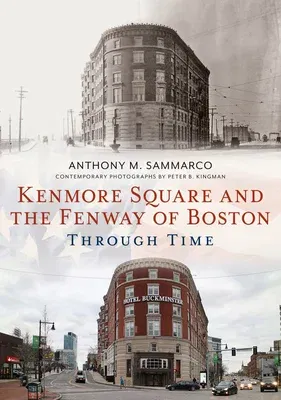Kenmore Square and The Fenway of Boston Through Time chronicles the
history and development of an area of the city of Boston that only began
in the early nineteenth century. When the Mill Dam, present day Beacon
Street, was opened in 1821 between the foot of Beacon Hill and Sewall's
Point, now known as Kenmore Square, the area west of Boston was now
accessible by land, as previously the only means of access was by The
Neck, a thin strip of land in the South End that connected Boston to the
mainland at Roxbury. However, in the late nineteenth century, Frederick
Law Olmsted transformed the marshland into the Back Bay Fens, which
became an integral part of the Emerald Necklace of Boston.
Anthony Sammarco, with contemporary photographs by Peter B. Kingman,
discusses Kenmore Square with the Hotel Buckminster, built in 1897
facing the prominent square, along with ease of transportation which led
to early residential hotels such as the Charlesview, the Wadsworth and
the Westgate to be built along with large hotels such as the Hotel
Kenmore and the Hotel Braemore. With apartment buildings constructed
between 1900 and 1930, the Back Bay Fens evolved into the Fenway
neighborhood, with not just accessibility to the city but also with a
far more park-like and naturalistic aspect than any other city
neighborhood. With numerous institutions from the Museum of Fine Arts
and the Boston Opera House to the Harvard Medical School and numerous
hospitals, Kenmore Square is dominated by the iconic Citgo sign and is
not just home to baseball's beloved Fenway Park, which draws huge crowds
for Red Sox games, but also many restaurants, shops and student hangouts
which have long been in and around Kenmore Square, and clubs and sports
bars along Brookline Avenue and Lansdowne Street.

